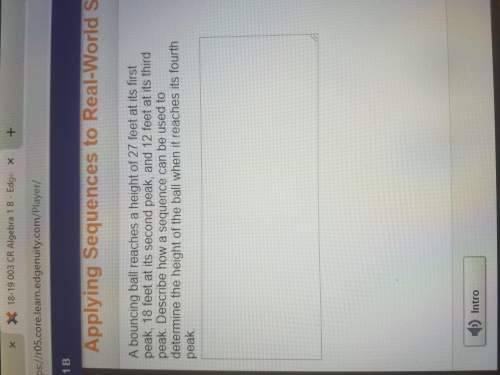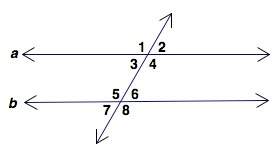
Mathematics, 07.03.2020 04:47 NewKidnewlessons
See the Central Limit Theorem in Action! Statisticians like to use software to simulate scenarios to see how statistical theorems hold up. In this activity, we will randomly generate populations of different shapes, randomly sample from them using different sample sizes and construct sampling distributions from repeated sampling. If all goes as planned, we should be able to validate the central limit theorem.
Getting Started:
Go to the following link https://courses. ecampus. oregonstate. edu/statistics/interactives/
Go to simulation 4 listed on the left hand side of the Statistics Interactives.
Q1. (4.5 points) From a normal population, investigate the shape, mean and standard deviation of randomly obtained sample with small n. Then sample 1000 samples of size n and investigate the shape, mean and standard deviation of the sampling distribution.
Instructions for Q1
Choose Normal as the "Distribution Type".
Then chose where you’d like the population to be centered. Do this by moving the slider under "Choose True Mean".
Next choose a sample size between 2 and 20 under the header "Choose Sample Size".
Choose 1000 for number of simualtions under the header "# of Simulations. You may need to wait a few moments for the simulation to run.
a. What is the shape of the population distribution?
b. The population mean and standard deviation are:
c. How big of a sample did you take? n =
d. The mean and standard deviation from the displayed sampled distribution are:
e. According to the central limit theorem, if the population is normal then the distribution of sample means will be normal with a mean of and a standard deviation of regardless of the sample size. Use your values from part Q1b to calculate the mean and standard deviation of the sampling distribution.
f. Based on the simulated distribution of sample means does the central limit theorem seem to hold? Describe the shape of the distribution of 1000 sample means. Is it normally distributed? What are the mean and standard deviation of the simulated means? These values should be somewhat close to the theoretical values from part Q1e, are they?
g. Now, change the sample size to a larger sample between 100 and 1000. How does the sampling distribution change based on the larger sample size? Be specific.

Answers: 2


Another question on Mathematics

Mathematics, 21.06.2019 15:10
Solve the system by the elimination method. x + y - 6 = 0 x - y - 8 = 0 when you eliminate y , what is the resulting equation? 2x = -14 2x = 14 -2x = 14
Answers: 2

Mathematics, 21.06.2019 21:30
What is the solution to this system of equations? y= 2x - 3.5 x - 2y = -14
Answers: 2

Mathematics, 22.06.2019 00:30
The length of a rectangle plus its width is 24 cm. the area is 143 square cm. what are the length and width of the rectangle?
Answers: 1

Mathematics, 22.06.2019 03:30
Aking and his army will attempt to capture a fortress. the left and right flanks break off from the main group to attack the west and east guard towers. suppose the left flank has a 60% chance of success and the right flank has a 75% chance of success, independently of one another. if both flanks capture their respective targets, then the king has a 98% chance of successfully taking the fort. if, however, only the left flank captures its tower, the king has an 80% chance of success; if only the right flank succeeds, the king has a 50% chance. if both flanks fail, then the king's chance of capturing the fort drops to 20%. it turns out the king captures the fort. what is the probability that one, and only one, flank was successful (either the left, or the right, but not both)? (round your answer to 3 decimal places)
Answers: 2
You know the right answer?
See the Central Limit Theorem in Action! Statisticians like to use software to simulate scenarios to...
Questions


Mathematics, 03.10.2020 01:01


English, 03.10.2020 01:01



Mathematics, 03.10.2020 01:01





Mathematics, 03.10.2020 01:01

History, 03.10.2020 01:01


Chemistry, 03.10.2020 01:01


Health, 03.10.2020 01:01

Health, 03.10.2020 01:01

Mathematics, 03.10.2020 01:01





